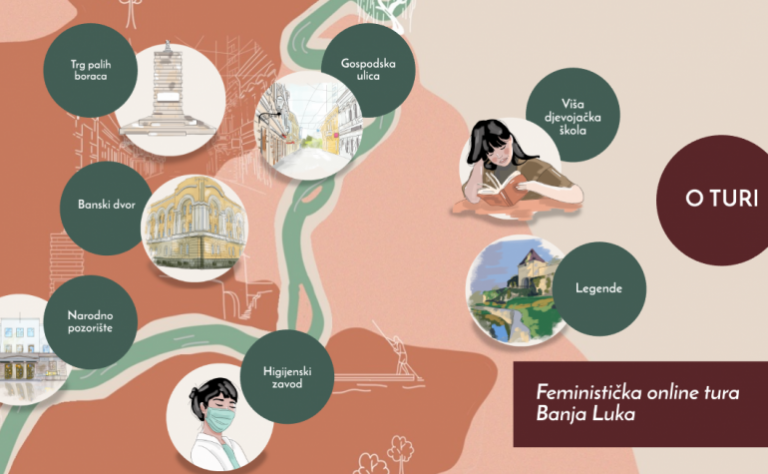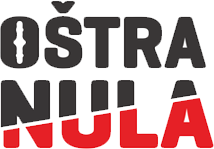The Helsinki Citizens’ Assembly Banja Luka has recently “launched” its Feminist Online Tour of the city of Banja Luka. Through this tour, you will have the opportunity to discover the women’s history of this city, marked by struggles, bans, perseverance, arrests, forbidden loves, protests, and more…
This virtual tour will take you through seven locations in the city, introducing you to the lives and work of remarkable women—writers, heroines, doctors, designers, architects, and actresses who defied the rules, pushed boundaries, and paved the way for women’s emancipation. For us.
We spoke about this truly remarkable tour with Dragana Dardić, the Executive Director of the Helsinki Citizens’ Assembly Banja Luka.
“This year, we planned to organize ‘live’ feminist tours through Banja Luka and, among other things, train guides to lead these tours. However, the COVID-19 pandemic completely changed those plans. In fact, the pandemic is ‘responsible’ for the creation and launch of the virtual feminist tour, where we transferred part of what we wanted to do in person”.
What was the main “trigger” for this project?
“The virtual tour is, in fact, a logical continuation of what began two years ago with the mapping of streets in Banja Luka named after women. When we discovered that out of 652 streets, only 6% were named after women, it became clear that we had to do something. The names of streets reflect what and who a community values, and they mirror the ideological and cultural attitudes of a society. Through these names, you can discern the history and the roles of men and women in a community. From the names of Banja Luka’s streets, one could conclude that women who worked and created in this city almost didn’t exist. We wanted to change that and show that women have indeed worked, built, and contributed significantly to the development of Banja Luka’s social, political, and cultural life. This led to the creation of the first feminist map of Banja Luka, and now, the virtual feminist tour”.
How did the process unfold, and did you encounter any obstacles?
“The creation of both tours was accompanied by challenges, primarily the lack of information about women or the complete absence of materials that could support or illustrate the stories about some of them. However, thanks to a group of women—Sarita Vujković, Milena Karapetrović, Draga Gajić, and Aleksandra Drinić—who collected and systematized an impressive amount of material, this project became possible.
We are incredibly proud of these tours, through which we shaped everything that has been gathered about women from the city’s history and made it publicly accessible. This is part of our activist response and effort to gender mainstream the culture of remembrance and to begin reintegrating into time and space the women who paved the way for future generations through their lives and work”.
In a way, this is a “living” project that should be expanded over time, right?
“The tours are envisioned as open platforms that can and should be enriched with new stories and information about notable women from Banja Luka’s past. This is also an invitation to everyone to contact the Helsinki Citizens’ Assembly ([email protected]) if they have photographs, documents, archival material, or any other resources that could be used to enhance the virtual feminist tour”.
What does this virtual tour include?
“The virtual tour currently includes a ‘walk’ through seven locations in the city, from Safikada’s grave, through Gospodska Street where Ravka Jovetić sewed her famous ball gowns, to the Banski Dvor, whose conceptual design was the work of Jovanka Bončić Katrinić, the first woman with an architecture degree in Germany. It also features the Girls’ School (previously located where the now-demolished Kozara cinema stood), the National Theatre, the Institute of Hygiene, and the Square of the Fallen Fighters of the People’s Liberation War, where the busts of our two national heroines, Vahida Maglajlić and Rada Vranješević, are located.
Through the virtual tour, we introduce you to the lives and accomplishments of 17 remarkable women who were connected to the city on the Vrbas River in various ways, as well as the context in which they lived and worked. During that period (from the earliest mention of Banja Luka to World War II), the position of women was far more unfavorable than it is today, thanks in large part to these women who fought for the right to education (systematic education for women in Banja Luka only began in the second half of the 19th century), to work, and to participate in political life”.
Jelena Računica Šatara/”Lola” newspaper



